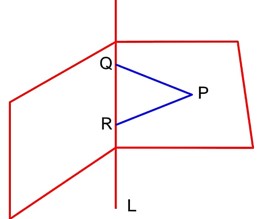Ncert Solutions Maths class 12th
Get insights from 2.5k questions on Ncert Solutions Maths class 12th, answered by students, alumni, and experts. You may also ask and answer any question you like about Ncert Solutions Maths class 12th
Follow Ask QuestionQuestions
Discussions
Active Users
Followers
New answer posted
2 months agoContributor-Level 9
System of equation is
R1 – 2 R2, R3 – R2
System of equation will have no solution for ![]() = -7.
= -7.
New answer posted
2 months agoContributor-Level 9
for n = 2, 4, 6 ……
f (n) = 4, 8, 12, ….4 (n) form
for n = 3, 7, 11, 15, ….
f (n) = 1, 3, 5, 7, …. (4n + 1) or, (4n + 3) from
f is one and onto.
New answer posted
2 months agoContributor-Level 10
g (x) = px + q
Compare 8 = ap2 …………… (i)
-2 = a (2pq) + bp
0 = aq2 + bq + c
->4x2 + 6x + 1 = apx2 + bpx + cp + q
->ap = 4 ……………. (ii)
6 = bp
1 = cp + q
From (i) & (ii), p = 2, q = -1
->b = 3, c = 1, a = 2
f (x) = 2x2 + 3x + 1
f (2) = 8 + 6 + 1 = 15
g (x) = 2x – 1
g (2) = 3
New answer posted
2 months agoContributor-Level 10
Fix the unit place, find the chances for the first three digits
unit digit as 1, total ways = 9.102
unit digit as 2, total ways = 4.52
unit digit as 3 total ways = 3.42
unit digit as 4 total ways = 2.32
unit digit as 5 total ways = 1.22
unit digit as 6 total ways = 1.22
unit digit as 7 total ways = 1.22
unit digit as 8 total ways = 1.22
unit digit as 9 total ways = 1.22
New answer posted
2 months agoContributor-Level 9
Let a and b are the roots of
Also, it has a common root with x2 + 2x – 8 = 0
The common root between above two equations is 4.
New answer posted
2 months agoContributor-Level 9
The line x + y – z = 0 = x – 2y + 3z – 5 is parallel to the vector
Equation of line through P(1, 2, 4) and parallel to
Let
is perpendicular to
Hence
Taking an Exam? Selecting a College?
Get authentic answers from experts, students and alumni that you won't find anywhere else
Sign Up on ShikshaOn Shiksha, get access to
- 65k Colleges
- 1.2k Exams
- 679k Reviews
- 1800k Answers

